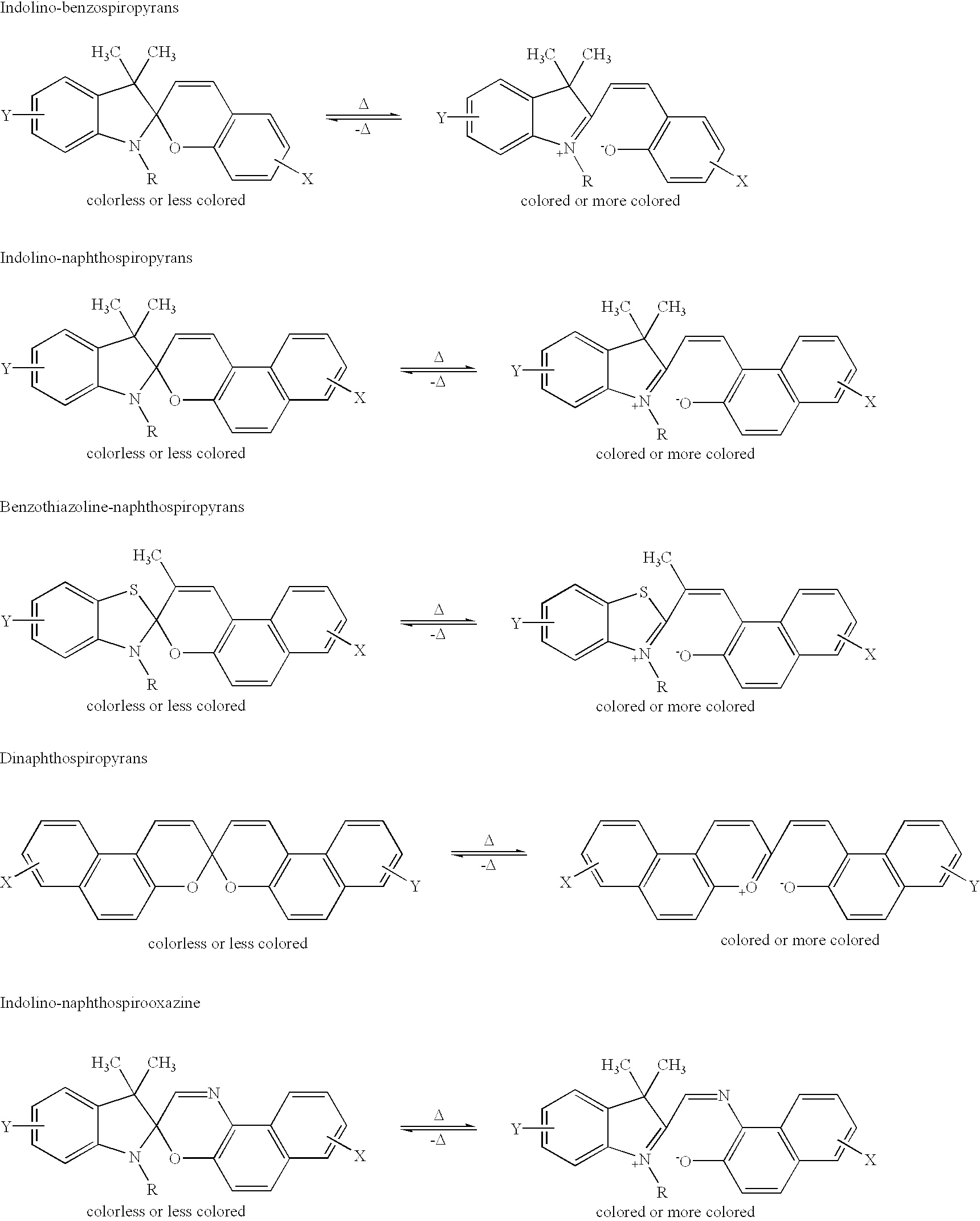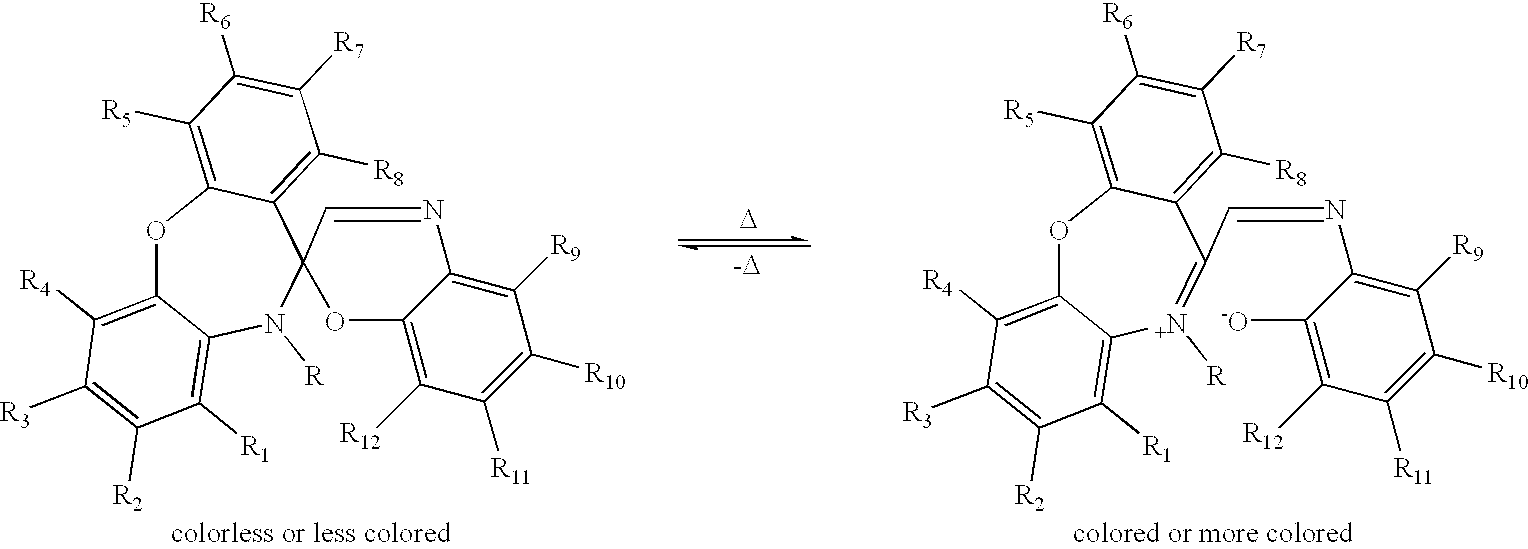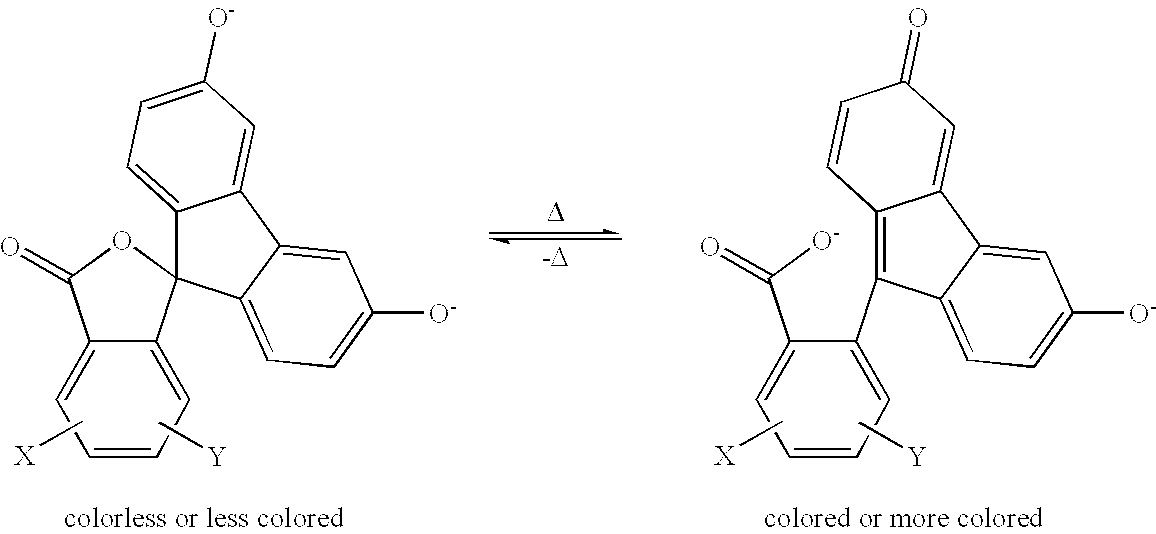Thermochromic devices
a technology of thermochromic devices and tempered glass, applied in the field of thermochromic devices, can solve the problems of affecting the design of windows, affecting the appearance of windows, and causing the installation of windows, etc., and achieve the effects of preventing, minimizing or modifying the photochromic reaction, and simplifying the use of tempered glass substrates
- Summary
- Abstract
- Description
- Claims
- Application Information
AI Technical Summary
Benefits of technology
Problems solved by technology
Method used
Image
Examples
example 5
A UV barrier layer was prepared on a 0.1 centimeter thick piece of glass by solvent casting a 0.02 centimeter thick layer which was 33 weight % 2-hydroxy-4-octyloxybenzophenone in poly(vinyl butyral-co-vinyl alcohol-co-vinyl acetate), (88% vinyl butyral, average molecular weight 50,000 to 80,000). The solvents used were ethyl acetate and amyl acetate. Both the benzophenone and the butyral copolymer were obtained from Aldrich Chemical Company Inc. of Milwaukee, Wis. The transmission spectrum of this barrier layer on the piece of glass after evaporation of the solvents is shown as curve 3 in FIG. 4.
example 6
A barrier to UV and SWV light was prepared on a 0.1 centimeter thick piece of glass by solvent casting a 0.02 centimeter thick layer which was 17 weight % 2-hydroxy-4-octyloxybenzophenone and 5 weight % quinoline yellow in poly(vinyl butyral-co-vinyl alcohol-co-vinyl acetate), (88% vinyl butyral, average molecular weight 50,000 to 80,000). The solvents used were ethyl acetate and amyl acetate. The 2-hydroxy-4-octyloxybenzophenone, quinoline yellow and the butyral copolymer were obtained from Aldrich Chemical Company Inc. of Milwaukee, Wis. The transmission spectrum of this barrier layer on the piece of glass after evaporation of the solvents is shown as curve 4 of FIG. 4.
example 7
A thermochromic device suitable for use as a window or a shutter was prepared by solvent casting a film that was 9.4 weight % Reversacol Sea Green, 45.3 weight % 2-hydroxy-4-octyloxybenzophenone (a UV stabilizer) and 45.3 weight % poly(vinyl butyral-co-vinyl alcohol-co-vinyl acetate), (88% vinyl butyral, average molecular weight 50,000 to 80,000) from a solution of these materials in 50 / 50 mixture ethyl acetate and amyl acetate on a piece of TEC 15 glass. The high content of 2-hydroxy-4-octyloxybenzophenone appeared to plasticize the film making it easy to laminate a piece of clear window glass to the TEC 15 glass after the solvents had evaporated. By applying pressure at 60.degree. C., thermochromic polymer film was pressed out to a uniform 0.025 centimeter thick film between the two pieces of glass, by using 0.025 centimeter thick nylon mono-filament spacers between the pieces of glass. It is believed that both the poly(vinyl butyral-co-vinyl alcohol-co-vinyl acetate) and the 2-hy...
PUM
| Property | Measurement | Unit |
|---|---|---|
| thickness | aaaaa | aaaaa |
| temperature | aaaaa | aaaaa |
| temperature | aaaaa | aaaaa |
Abstract
Description
Claims
Application Information
 Login to View More
Login to View More - R&D
- Intellectual Property
- Life Sciences
- Materials
- Tech Scout
- Unparalleled Data Quality
- Higher Quality Content
- 60% Fewer Hallucinations
Browse by: Latest US Patents, China's latest patents, Technical Efficacy Thesaurus, Application Domain, Technology Topic, Popular Technical Reports.
© 2025 PatSnap. All rights reserved.Legal|Privacy policy|Modern Slavery Act Transparency Statement|Sitemap|About US| Contact US: help@patsnap.com



